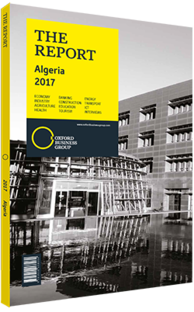Algeria announces slew of solar PV projects
Faced with dwindling oil and gas revenues, rising domestic consumption and growing environmental awareness, solar energy has come to occupy a more prominent role in the development of the country’s energy mix in recent years. Testament to this are government plans to develop a 4-GW solar project.
Infrastructure
First announced in March 2017, the project will comprise six solar plants to be installed at different sites across the country. It will be parcelled into three separate packages of 1.3 GW and tendered to three different candidates under power purchasing agreements spanning at least 20 years.
Sonatrach, Algeria’s national oil company, is expected to retain 40% of the venture while state-owned utility Sonelgaz and other public and private local companies occupy the remaining 11%. The project also requires that potential investors participate in the development of a local industry for solar power plant components, including photovoltaic (PV) panels.
Solar Potential
As the biggest country on the continent and with the Sahara desert occupying 75% of its territory, Algeria boasts undeniable potential for the development of solar energy, especially in the south, where insolation rates are as high as 2650 KWh per sq metre. As a result, Algeria expects to generate 37% of its electricity needs from solar by 2030, as outlined in the National Development Plan for Renewable Energies, which aims to achieve an installed renewable generation capacity of 22 GW by 2030, with solar accounting for 13.5 GW (see overview). Currently, 93% of Algeria’s power generation needs are met with natural gas, with demand for electricity having increased by an annual average of 6.6% between 2005 and 2015, on the back of demographic and economic growth (see analysis).
Expanding Capacity
Consequently, several renewable energy projects have since seen the light of day, bringing the country’s overall number of solar plants to 23. These include Hassi R’Mel’s combined solar thermal power plant, the country’s largest up to this point, which first began operations in 2011 and has an output of 25 MW of solar power and 130 MW of combined-turbine gas production. Additionally, in 2015, 14 PV plants became operational, bringing with them a total capacity of 268 MW to the Hauts-Plateaux region and across the south. More recently, in May 2017, a 3-MW solar plant was installed in Djanet in the wilaya (province) of Illizi, and in September 2017, Aïn El Melh in the M’Sila wilaya also welcomed a new 20-MW PV plant.
Consolidation
To further support sector ambitions, a new solar energy cluster was set up in 2017 to host small and medium-sized solar enterprises, the state-owned Centre for the Development of Renewable Energy, local mining companies and representatives from the Ministry of Energy. The cluster looks to foster stronger ties between sector operators and consolidate activities throughout the value chain.
Challenges
While more modest-sized projects continue to come on-line, the outlook for the 4-GW solar project remains somewhat ambiguous. Tenders are yet to be launched, and, according to Akli Brihi, Maghreb cluster president at Schneider Electric, there remain some technical and financial issues to be resolved in order to make the offer attractive to investors. “It is critical that Algeria invests heavily in renewables in order to preserve its conventional resources. However, to attract investors, we need to put forth an attractive offer as well,” Brihi told OBG. “For instance, the project framework in all its aspects needs to be clearer, including how it is going to be profitable for investors.” Moreover, unlike thermal solar, PV is a fast evolving technology and the life span of a given plant is around 25 years. Consequently, as renewables require large investments, there needs to be a long-term vision and approach that will take into account factors such as recycling – considering that solar panels are 95% recyclable. More can also be done off-grid to better connect the south, where the largest share of solar projects are established, to the rest of the country.
You have reached the limit of premium articles you can view for free.
Choose from the options below to purchase print or digital editions of our Reports. You can also purchase a website subscription giving you unlimited access to all of our Reports online for 12 months.
If you have already purchased this Report or have a website subscription, please login to continue.

